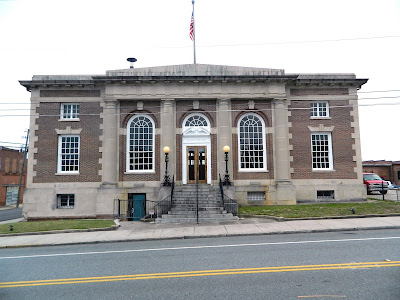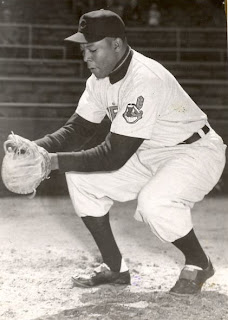THE KEEPER OF THE DREAM
Dreams do come true. This Jeff Davis knows. When he was five years old, Jeff climbed the steps of a castle. His father helped him through the "rolling doors." His eyes beheld a dream. And, one day, he told himself and his daddy, that the old Post Office on Madison Street was going to be his very own building.
And, today, on the 100th anniversary of the building's opening as the Dublin Post Office, Jeff Davis's dream has come true. To celebrate the occasion, he has invited his friends to commemorate the beginning of the second century of a true Dublin landmark.
"I remember the steps. And, when I got to the top, it was the biggest building that I had ever seen. I didn't know what to do at the door. My dad came and got me. And, I came in the lobby and thought it was a castle. Even at five, the building floored me," Jeff recalled.
It was on August 2, 1912, when Dublin's grand new post office opened for the first time. Situated on East Madison Street in the heart of the agra-industrial district of the Emerald City, the post office was the one of the city's focal points for businessmen and residents.
Too small even from the beginning to accommodate a post office in a burgeoning city, the capacity of the building was furthered reduced by the need for a Federal court room, a move necessary to accommodate the rapidly growing number of moonshine cases in the district. Accordingly, the Federal government constructed a courtroom above the main workroom of the post office in the late 1920s. Within five years, plans were underway to build a new Federal building on the courthouse square, leaving the Madison Street Post Office to be occupied by sundry offices of county and state government in 1937.
In the early 1970s, Laurens County sold the building to Joe Rutland, who operated a pawn and antique store in the building for three decades. Over the next few years, the building housed a restaurant and a bar, before becoming the home of Will and Jennifer Carter.
"You have to give all the credit to Will Carter and his wife, Jennifer, because they lived here and this building was their home. They loved it and they were good caretakers of the building," Davis proclaimed as he praised the Carters, who knew all the original details and never harmed anything which was original to the building.
After watching the activities in the building for several years and appreciating the rebirth of the downtown area, Davis contacted Carter about purchasing the empty structure. The Carters agreed to sell what was once their dream as well. The Carters even attended Rutland's estate sale, where they spotted and retrieved the building's original blue prints, which now hang in the lobby of the post office building, professionally framed underneath special light resistant glass.
Davis, the current Dublin Rotary Club President, was looking for a new location for his growing data storage business, Alterra Networks, a full service information technology solutions provider.
"When I bought the building, it took me about four or five times in there to realize that about 85 percent of the building was still here," remarked Davis, who personally flyspecked every nook and cranny of the sturdy structure finding hidden clues to its past. Sometimes the clues came to him in the form of stories of bygone days and visitors to the building. He discovered secret windows in the top of the work room, where the postmaster and inspectors could spy on employees, looking for sticking fingers while they were sorting mail and taking money orders.
There are large fixtures intact as well as small ones. In Davis's personal, second-story corner office, there is an original light switch. There's even a triangular sink in the corner right next to a century old towel holder. From his vantage point, Davis can look out the window gazing toward what was once the heart and soul of the industrial and agricultural center of Laurens County.
He can even tell you where the post office bought their sweeping compound, toilet paper, coal and light bulbs from. He knows this because he contacted the National Archives and received more than 1500 pages of records, which document in exact details all of the activities which went on during the construction and operation of the building during its early years.
With most of the original plans in hand, Davis set out on a passionate mission to restore, replicate, or replace as much of the original building and its fixtures as he could. He doesn't see it as one shot deal, but a long term process.
"Everything that is not here can be put back with one hundred percent certainty," Jeff maintains.
One of the first things Davis noticed was that the original lobby clock was missing. After examining his mounds of documentation, he determined that it was a Seth Thomas Model 21, 14- inch gallery clock, the only one they made that year. Davis went on eBay, quickly found one, and bought it at a price less than a modern day clock would cost. Although the original clock had to been wound by hand, Davis adapted the replacement clock to run off long lasting batteries.
Obviously missing were the original post office boxes, which were removed when the county took over the building in the 1930s. Davis had seen an original one in the Dublin- Laurens County Museum and set out to research the kinds of boxes which were originally installed. It was back to eBay, where he purchased similar boxes by the hundreds, which he then had polished and reinstalled exactly where they were a century ago.
There is one thing that Jeff Davis doesn't plan to immediately restore. There is a row of windows for different types of services which the postal service provided. In front of the main stamp window, there is a bare spot, where the feet of hundreds of thousands of customers completely eroded away the marble floor.
One day he was outside and noticed several dozen people posing for a picture on the front steps. The group assembled there to remember the day many decades ago when the patriarch and matriarch of the family met for the first time. Their descendants gather there periodically to remember the seminal event which led to their becoming a family.
"I don't know anybody who hasn't walked through that revolving door whose breath is not taken away," said Davis about the building's most striking feature.
In 1937, when the county moved in, the building was only a quarter century old and lots of changes had already been made.
"The public has not seen the building like this for 80 years. No one alive, other than the workers, has seen the building in 80 years without the temporary courtroom," said Davis, whose workers had to strip away three coats of paint on each side of the lobby windows to remove the impudent impediments to the building's original grandeur. .
"This building is all about light, natural light. There are very few light fixtures in the building," Davis commented as he pointed to the fact that he and his employees work until early in the evening without turning on a single light.
"I want it to be downtown's formal living room. I want it to be a gathering place," says Davis, who believes that the building is just warming up.
"This building was built when this country was very rich and architecture was an honored discipline. There was a real good quote from the Secretary of the Treasury at the time, 'We can use these post offices in small towns to inspire the citizens. We can put the most architecturally beautiful building in a community and hope that we can inspire the other citizens to build to that level,'" says Davis, who believes that the building was built to make a statement and still can.
"There will never be another one like this building. Even though I am the caretaker of it now, this building belongs to everybody. When you put yourself in that context, you can't really say that you own this building," Davis believes.
"My inspiration comes from thinking about the day when the folks we read about in the history books who built houses on Bellevue came through those doors. They did business down here. And, then there were people who were just regular folks and did business here at the post office," Jeff remarked.
Davis can even imagine the building being here after another 100 years or even a thousand years from now. He foresees, "There will be a day when school children will come here and be informed that once we sent paper to each other and we had to build these buildings to receive and route these paper communications."
"It's a special building. It holds a special place in people's hearts," Jeff Davis believes.
In particular, the building always reminds Jeff Davis of that unforgettable autumn day when his late father stopped in to pick up some shot gun shells to go on a dove hunt out a James Rawls' farm. It was that day, the very first day, when Jeff began to imagine his dream.




































